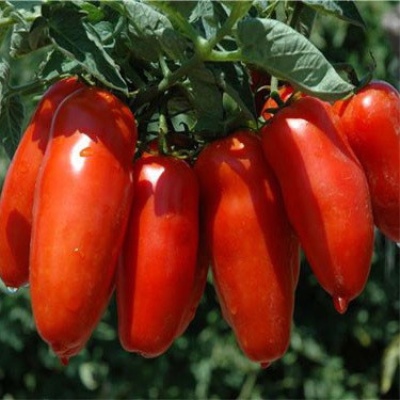
- Category: hybrid
- Growth type: determinant
- Appointment: universal
- Ripening period: mid-early
- Ripening time, days: 100-120
- Growing conditions: for open ground
- Transportability: high
- Bush height, cm: up to 60
- Bush characteristic: compact
- Ripe fruit color: pink, with a slight moire
Breeding tomato hybrids are attractive in that they do not take up much space on the beds and do not need painstaking care. These include the Ballerina tomato, which appeared on the agricultural market relatively recently, but has proven itself well. Most summer residents and gardeners speak positively about this variety, noting its excellent taste, early yield and ease of growing.
Description of the variety
The ballerina tomato was developed by domestic breeders. A suitable region for growing outdoors is the south of Russia; in the middle lane, tomatoes are planted under a film. It does not tolerate low temperatures, therefore, the plant is not suitable for cold climatic zones, or heated greenhouses are used.
The culture is low, the bushes are compact, they reach no more than 60 cm in height. Requires a garter because of the thin and fragile stems. There are few green leaves on the shoots.
The main qualities of the fruit
Medium-sized tomatoes have a pink color, with a slight moire, in weight they can reach 60-120 g. The shape of the fruit is bullet-shaped. The pulp is juicy, with small seeds, which are practically not felt when consumed.
Despite the fact that the skin is thin, it is quite dense, which allows the harvested crop to tolerate transportation well. Tomatoes can lie for a long time without losing their presentation.
Taste characteristics
Fruits with a pronounced tomato sweet and sour taste, however, the sourness present gives a pleasant aftertaste.
The purpose of the tomato is universal. They can be preserved or consumed fresh. Due to the dense skin, when poured with boiling water, they do not crack. Tomatoes are added to salads, sauces, ketchups, pastas or dressings for first courses are prepared from them.
Ripening and fruiting
Ripening occurs 100-120 days after the first shoots, it is considered a mid-early hybrid. The crop can be harvested from July, and the harvest continues in August.
Yield
High-yielding hybrid. With proper care, from 1 sq. m, 3-4 kg of fruits are harvested, when grown in open ground, in greenhouse conditions, the yield is several times greater - 9-10 kg per planting meter.
The timing of planting seedlings and planting in the ground
For seedlings, seeds begin to germinate in early March. The hybrid is distinguished by friendly shoots. The first shoots can be seen already on the 10th day of planting.
You can germinate the plant in cups, a container, or a greenhouse. For this procedure, it is preferable to choose a fertile soil. Water the seedlings with warm water.
They start picking sprouts when they have 2 full-fledged leaves. The procedure is carried out 1 time, since the seedlings do not stretch much.
In April, Ballerina's seedlings can be planted in the greenhouse. Since the plant does not tolerate low temperatures well, you should not rush to plant it in open ground. The optimal time for landing outdoors is when the weather is warm +18.20 degrees, around mid-May. However, the time for planting largely depends on the climatic conditions of the region.

Growing tomato seedlings is an extremely important process, because it largely depends on whether the gardener will be able to harvest at all.All aspects must be taken into account, from seedbed preparation to planting in the ground.
Landing scheme
The holes are made at a distance of 30-40 cm from each other, moistened and fertilized. The plant is compact, no more than 3-4 seedlings can be planted per square meter.

Growing and care
The variety is not too picky about care, even a novice summer resident can handle it. However, in order to get a good harvest, the plant needs to be looked after. Care is simple - timely watering, feeding and loosening the earth.
After the seedlings have been planted in a permanent place, the tomato needs to be given time to adapt for several days. When young leaves begin to appear on the seedlings, they begin to water and loosen the soil.
Irrigation is carried out several times a week, if the weather is hot and dry, the watering is increased. For less moisture loss from the soil, mulch is laid. You need to loosen the soil constantly. This procedure enriches the earth with oxygen.
The introduction of organic and mineral fertilizers is an important component of the good development of a tomato. The Ballerina especially needs nitrogen and potassium fertilizers. Nitrogen allows you to build up green mass and develop the root system, and potassium affects the taste characteristics of tomatoes.
The ballerina is one of the few hybrids that practically does not give rise to stepchildren. And also there is no need to tie the bushes.




A plant needs different micronutrients at each stage of growth. All fertilizers can be divided into two groups: mineral and organic. Folk remedies are often used: iodine, yeast, bird droppings, eggshells.
It is important to observe the rate and period of feeding. This also applies to folk remedies and organic fertilizers.
Disease and pest resistance
The variety has a fairly strong immunity to many fungal diseases. But, in order to exclude possible damage to the plant by various pests, during the flowering period, prophylactic treatment of the bushes with special preparations is carried out.
Thrips and melon aphids inflict special damage. They are handled by fungicides and insecticides.As well as root rot (they can cope with it thanks to regular weeding of the beds), slugs and snails, they are collected by hand.



























































































